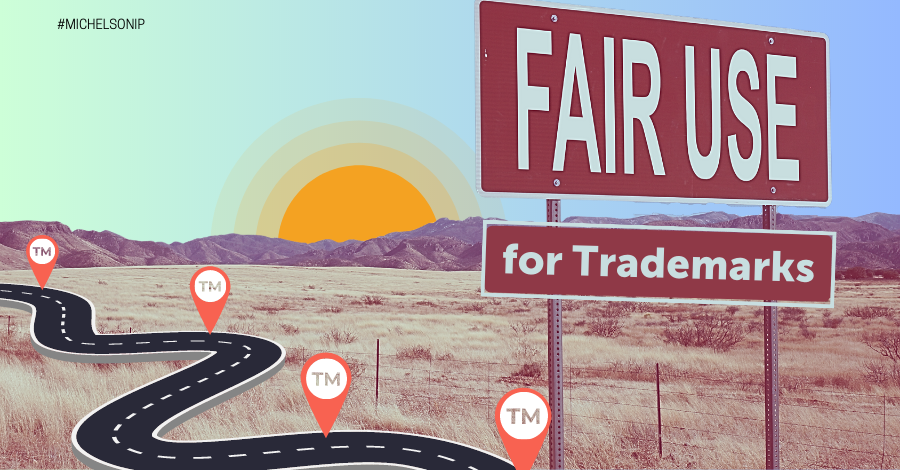Due to numerous lawsuits, particularly in the music industry, it is well known there is a “fair use” doctrine for copyrighted works. But did you know there are also scenarios which allow for the fair use of trademarks?
First, what is a trademark? The United States Patent and Trademark Office provides this definition: “A trademark can be any word, phrase, symbol, design, or a combination of these things that identifies your goods or services. It’s how customers recognize you in the marketplace and distinguish you from your competitors.
Defining Fair Use for Trademarks
Generally speaking, trademark protection bars others from using the mark. However, the Lanham Act has expressly provided for fair use of a mark. Section 15 U.S.C. § 1115(b)(4) provides several defenses to infringement, including fair use. The defendant may use the defense of fair use if the defendant:
- Used the mark as other than a trademark or other than to distinguish the defendant’s goods from the plaintiff’s and to indicate the source of the defendant’s goods,
- Used the mark fairly and in good faith, and
- Used the mark only to describe the defendant’s goods or services (or their geographic location) as those of the defendant’s and not the original goods and services of the plaintiff.
What does this mean in plain English? Quite simply, it means that a party who is being sued for trademark infringement and not using the mark in commerce, but rather as a description of the defendant’s goods or services, may be able to utilize the fair use defense. A description can include a characteristic, function, or purpose of the goods or services, among other things.
Nominative vs. Classic Fair Use
The previous discussion addresses “classic” fair use of a trademark. There is also “nominative” fair use. This type of fair use allows for a party to name the trademark owner’s goods and services if they could not otherwise be easily identified. In the Fair Use of Trademarks section of our digital ebook, The Intangible Advantage, it states examples of nominative fair use including:
An example of nominative fair use is when an auto repair shop advertises that it repairs BMWs and Hondas. It is using the mark “Honda” to refer to cars genuinely produced by the Honda Motor Company, and simply asserting that it is able to conduct repairs on those cars. Another example of nominative fair use is use of a competitor’s trademark in comparative advertising. When Verizon advertises that it has better coverage than AT&T, it is making nominative fair use of AT&T’s mark because it is actually referring to AT&T’s services.
What Else Qualifies as Fair Use
Courts have found fair use in various scenarios, including parody, reviews of products, news broadcasts, comparison advertising, and identifying customers to show a relationship.
Examples of Fair Use for Trademarks
Barbie has been the subject of many a lawsuit. Mattel sued Aqua, the band who sang the song “Barbie Girl,” a catchy tune about Barbie and her “Barbie World.” Mattel claimed, among other things, infringement of its Barbie trademarks. However, the court sided with Aqua and its record company, MCA Records, finding the song was a parody, and therefore qualified as fair use.
Luxury cars such as BMW or Audi are expensive to service, particularly if one goes to a car dealership for the work. It is usually less costly to bring the car to a third-party shop that specializes in repairing these vehicles. Can these shops use a car logo such as BMW or Audi’s marks advertise their business? Courts have ruled in favor of the third-party repair shops, finding that using the car’s logo to advertise repair services does NOT infringe upon the trademark owner’s rights. This is an example of nominative fair use, as there is no other easy way to identify a car other than its logo.
People often want to buy a toothbrush that dentists recommend. The case of Wonder Labs vs. Proctor and Gamble (728 F. Supp. 1058 (S.D.N.Y. 1990) arose because the plaintiff had trademarked the phrase “Dentist’s Choice.” The court found using the phrase “The dentists’ choice for fighting cavities” to describe a toothbrush was fair use. This is an example of classic fair use, as it is descriptive.
An example where the court did NOT find fair use relates to lawsuits against companies which made scented sprays “like” famous perfumes. The court found the comparison gave the imitation fragrances an advantage because they advertised smelling like the famous scents. Note that this example shows the main purpose of using the mark was commerce, which negates the fair use defense.
Precautions for Fair Use of Trademarks
There are some precautions that can be taken before using trademarks under fair use. First, ensure there is no likelihood of confusion of your good or service with the mark’s good or service. Second, use only what is minimally necessary when using the mark. Third, do not use the mark as a means of commerce.
These tips will help you keep you in the fair use realm and likely to avoid litigation.
Further Reading
What if Someone Infringes Your Trademark?
How Long Does a Trademark Last?
Trademark Fundamentals for the Entrepreneur
_________
 The Michelson Institute for Intellectual Property, an initiative of the Michelson 20MM Foundation, provides access to empowering IP education for budding inventors and entrepreneurs. Michelson 20MM was founded thanks to the generous support of renowned spinal surgeon Dr. Gary K. Michelson and Alya Michelson. To learn more, visit 20mm.org.
The Michelson Institute for Intellectual Property, an initiative of the Michelson 20MM Foundation, provides access to empowering IP education for budding inventors and entrepreneurs. Michelson 20MM was founded thanks to the generous support of renowned spinal surgeon Dr. Gary K. Michelson and Alya Michelson. To learn more, visit 20mm.org.

IAM SO HAPPY ABOUT YOUR ORG.
IT IS DOING FANTASTIC WORK WORLD WIDE
CAN WE BECOME PARTNERS?